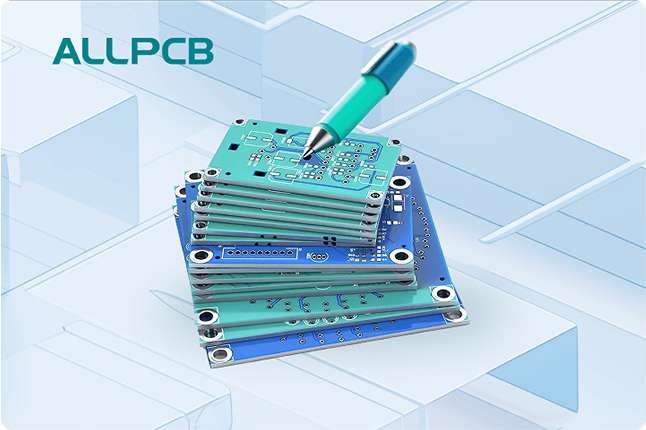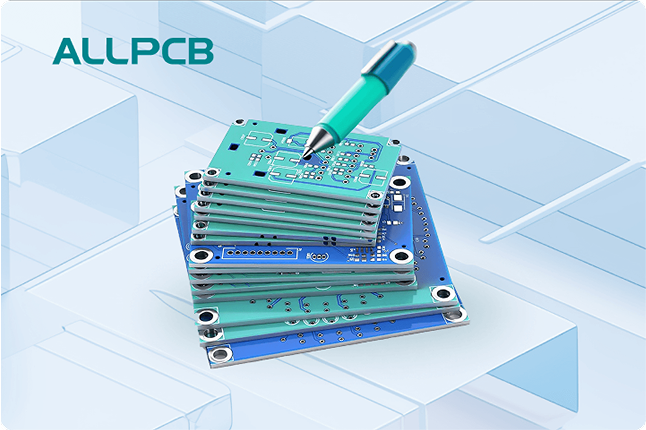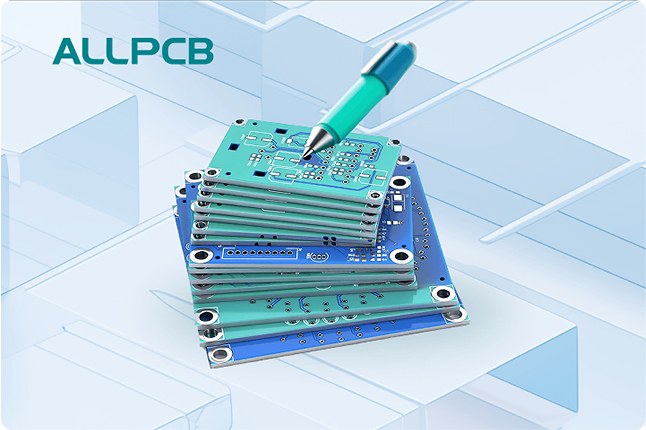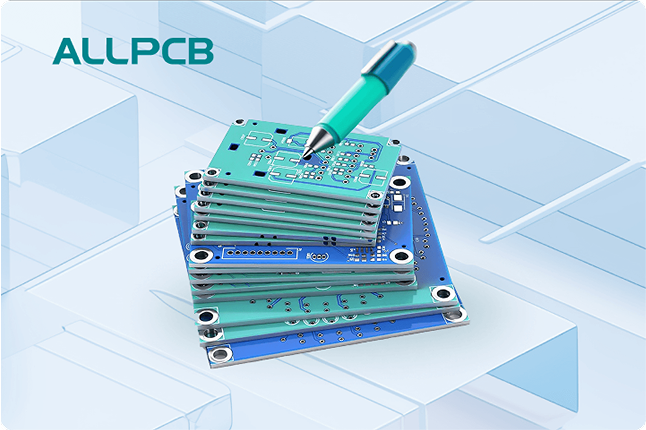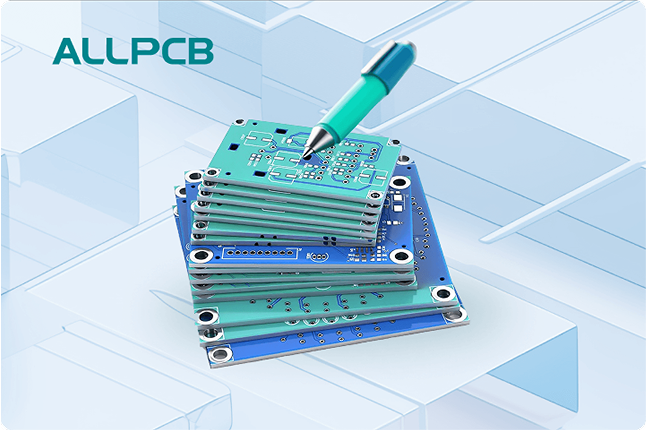When it comes to designing rigid printed circuit boards (PCBs), selecting the right material is crucial for performance, durability, and cost-effectiveness. The most commonly used materials for rigid PCB design are FR-4 and CEM series materials, each with distinct properties that suit different applications. In this comprehensive guide, we’ll dive into a detailed comparison of rigid PCB material properties, focusing on FR-4 and CEM materials, to help you make informed decisions for your next project.
Whether you’re an engineer working on high-frequency circuits or a designer looking for cost-efficient solutions, understanding the differences between rigid PCB FR-4 material and rigid PCB CEM material can significantly impact your design’s success. Let’s explore their characteristics, benefits, and ideal use cases to provide clarity on which material best fits your needs.
Understanding Rigid PCB Materials: Why Material Choice Matters
Rigid PCBs form the backbone of most electronic devices, providing a sturdy platform for mounting components. Unlike flexible PCBs, rigid boards are made from solid, non-bending materials, ensuring stability in applications like consumer electronics, industrial equipment, and automotive systems. The base material of a rigid PCB directly affects its electrical performance, thermal resistance, and mechanical strength.
The two primary material categories for rigid PCBs are FR-4 and CEM (Composite Epoxy Material) series. These materials differ in composition, cost, and performance, making it essential to understand their properties before selecting one for your design. Let’s break down the key factors that define rigid PCB material properties and compare these popular options.
What is FR-4 Material in Rigid PCB Design?
FR-4, short for Flame Retardant 4, is the most widely used material for rigid PCB design. It is a composite material made of woven fiberglass cloth impregnated with an epoxy resin binder, offering a balance of cost, performance, and availability. FR-4 is known for its excellent mechanical strength, electrical insulation, and flame resistance, making it a go-to choice for many applications.
Key Properties of Rigid PCB FR-4 Material
- Dielectric Constant (Dk): Typically ranges from 4.2 to 4.8 at 1 MHz, which supports stable signal transmission in most standard applications.
- Dissipation Factor (Df): Around 0.02, indicating low signal loss at moderate frequencies.
- Glass Transition Temperature (Tg): Standard FR-4 has a Tg of about 130–140°C, while high-Tg variants can reach up to 170–180°C for better thermal stability.
- Thermal Conductivity: Approximately 0.3 W/m·K, which is relatively low, requiring additional heat dissipation solutions for high-power designs.
- Coefficient of Thermal Expansion (CTE): Around 14–18 ppm/°C, which ensures moderate dimensional stability under temperature changes.
- Cost: Highly cost-effective, making it suitable for mass production and budget-conscious projects.
Advantages of FR-4 for Rigid PCBs
FR-4’s popularity stems from its versatility. It offers good mechanical strength, making it ideal for multilayer boards. Its flame-retardant properties comply with safety standards like UL94 V-0. Additionally, FR-4 is widely available in various thicknesses (from 0.2 mm to 3.2 mm) and copper weights, allowing flexibility in design.
Limitations of FR-4
While FR-4 excels in many areas, it has limitations in high-frequency and high-temperature applications. Its dielectric properties degrade above 1 GHz, leading to signal loss in RF circuits. For designs requiring operation above 150°C, standard FR-4 may not suffice unless a high-Tg variant is used, which increases costs.
What is CEM Material in Rigid PCB Design?
CEM, or Composite Epoxy Material, refers to a family of materials used in rigid PCB design, primarily CEM-1 and CEM-3. These materials combine epoxy resin with different reinforcements, such as paper or woven glass, to achieve specific performance characteristics. CEM materials are often seen as alternatives to FR-4, particularly in cost-sensitive applications.
Key Properties of Rigid PCB CEM Material
CEM-1
- Composition: Made of a paper core with woven glass fabric on the surface, bonded with epoxy resin.
- Dielectric Constant (Dk): Around 4.5 to 5.0 at 1 MHz, slightly higher than FR-4, indicating minor differences in signal performance.
- Dissipation Factor (Df): Approximately 0.03, showing slightly higher signal loss compared to FR-4.
- Glass Transition Temperature (Tg): Typically around 110–120°C, lower than standard FR-4, making it less suitable for high-heat environments.
- Thermal Conductivity: About 0.2–0.3 W/m·K, similar to FR-4 but with less consistency due to the paper core.
- Cost: Generally cheaper than FR-4, ideal for low-cost, single-sided PCBs.
CEM-3
- Composition: Features a non-woven glass mat core with woven glass fabric on the surface, offering better strength than CEM-1.
- Dielectric Constant (Dk): Around 4.5 to 4.8 at 1 MHz, closer to FR-4.
- Dissipation Factor (Df): Around 0.025, better than CEM-1 but still higher than FR-4.
- Glass Transition Temperature (Tg): Approximately 120–130°C, slightly better than CEM-1 but not as high as FR-4.
- Thermal Conductivity: Similar to FR-4 at 0.3 W/m·K.
- Cost: More expensive than CEM-1 but still cheaper than FR-4, suitable for double-sided and simple multilayer boards.
Advantages of CEM Materials
CEM-1 is often used in low-cost consumer electronics due to its affordability and ease of processing, especially for single-sided boards. CEM-3, with improved mechanical strength, can handle double-sided designs and offers better moisture resistance than CEM-1, making it a middle-ground option between CEM-1 and FR-4.
Limitations of CEM Materials
CEM materials generally fall short in thermal and mechanical performance compared to FR-4. CEM-1 is not suitable for multilayer designs or high-temperature applications due to its paper core. CEM-3, while better, still lacks the robustness of FR-4 for complex, high-reliability projects. Both materials also have higher dissipation factors, leading to more signal loss in sensitive circuits.
Comparative Analysis of FR-4 and CEM Materials for Rigid PCB Design
To help you choose the right material, let’s compare rigid PCB FR-4 material and rigid PCB CEM material across key performance parameters. This side-by-side analysis will highlight their strengths and weaknesses for different design needs.
1. Electrical Performance
FR-4 offers a lower dielectric constant (4.2–4.8) and dissipation factor (0.02) compared to CEM-1 (4.5–5.0, 0.03) and CEM-3 (4.5–4.8, 0.025). This makes FR-4 more suitable for applications where signal integrity is critical, such as in digital circuits operating below 1 GHz. For high-frequency designs above 1 GHz, however, even FR-4 may require specialized variants or alternative materials like PTFE, though that’s beyond the scope of this comparison.
2. Thermal Stability
With a Tg of 130–140°C (or higher for high-Tg versions), FR-4 outperforms both CEM-1 (110–120°C) and CEM-3 (120–130°C) in thermal stability. This makes FR-4 a better choice for environments with elevated temperatures, such as automotive or industrial electronics. CEM materials, particularly CEM-1, are more prone to delamination under heat stress.
3. Mechanical Strength
FR-4’s woven fiberglass structure provides superior mechanical strength, allowing it to support multilayer designs (up to 20 layers or more in advanced applications). CEM-1, with its paper core, is limited to single-sided or simple double-sided boards, while CEM-3 can manage basic multilayer designs but lacks the robustness of FR-4.
4. Cost and Availability
CEM-1 is the cheapest option, followed by CEM-3, with FR-4 being the most expensive of the three. However, FR-4’s wide availability and compatibility with standard manufacturing processes often offset the cost difference for medium to large-scale production. For low-budget, high-volume products like basic toys or calculators, CEM-1 remains a popular choice.
5. Application Suitability
- FR-4: Ideal for multilayer boards, high-reliability applications, and designs requiring good thermal and electrical performance. Commonly used in computers, smartphones, and industrial controls.
- CEM-1: Best for single-sided, low-cost applications with minimal thermal or mechanical demands, such as in simple consumer electronics.
- CEM-3: A middle-ground option for double-sided or basic multilayer boards where cost savings are prioritized over top-tier performance.
How to Choose the Right Material for Your Rigid PCB Design
Selecting between FR-4 and CEM materials depends on your project’s specific requirements. Here are some practical considerations to guide your decision:
- Budget Constraints: If cost is a primary concern and the design is simple (single-sided with low performance needs), CEM-1 is a viable option. For slightly more complex designs with a limited budget, consider CEM-3.
- Performance Needs: For applications requiring stable electrical performance and multilayer configurations, FR-4 is the better choice. If your design operates in high-temperature conditions, opt for a high-Tg FR-4 variant.
- Environmental Factors: Consider the operating environment. For humid or high-moisture conditions, FR-4 and CEM-3 offer better resistance compared to CEM-1.
- Manufacturing Complexity: FR-4 supports advanced manufacturing techniques like fine-line etching and high-density interconnects (HDI), while CEM materials are better suited for simpler processes.
Conclusion: Making an Informed Choice for Rigid PCB Materials
Understanding rigid PCB material properties is essential for designing boards that meet performance, cost, and reliability goals. FR-4 stands out as the most versatile and widely used material, offering a strong balance of electrical, thermal, and mechanical characteristics for a wide range of applications. On the other hand, rigid PCB CEM material, including CEM-1 and CEM-3, provides cost-effective alternatives for simpler, less demanding designs.
By carefully evaluating your project’s needs—whether it’s signal integrity, thermal endurance, or budget—you can confidently select between rigid PCB FR-4 material and CEM options. With this comparative analysis, you’re equipped to make informed decisions that optimize both performance and cost in your rigid PCB designs.
 ALLPCB
ALLPCB


